How Group 21 and Group 21R Batteries Compare
How Group 21 and Group 21R Batteries Compare
When it comes to choosing the right battery for your vehicle, even small differences in specifications and terminal positions can have a significant impact on performance, compatibility, and ease of installation. Two often-compared options are the Group 21 battery and the Group 21R battery. At first glance, these batteries might seem nearly identical, but understanding their differences is crucial for making the right decision. This comprehensive guide explores the dimensions, terminal placement, performance, applications, and key similarities and differences between the Group 21 and Group 21R battery models to help you choose the most suitable one.
- Understanding Group 21 and Group 21R Battery Basics
- Battery Terminal Orientation and Installation Considerations
- Battery Performance Comparison: Group 21 vs Group 21R
- Physical Specifications and Compatibility
- Choosing the Right Battery for Your Vehicle
- Pricing and Availability Differences
- Battery Chemistry Options for Group 21 and 21R
- Maintenance and Safety Considerations
- Environmental Considerations and Recycling
- Summary Comparison: Group 21 vs Group 21R Battery
Understanding Group 21 and Group 21R Battery Basics
What Is a Group 21 Battery?
A Group 21 battery is classified under the BCI (Battery Council International) group size system. It typically features specific standardized dimensions and terminal arrangements suited for various older model vehicles and equipment.
- Typical Dimensions: Approx. 8.75" x 6.75" x 8.88" (L x W x H)
- Voltage: 12V
- Cold Cranking Amps (CCA): Usually ranges from 400 to 600
- Reserve Capacity (RC): Around 90–120 minutes
Group 21 batteries are generally used in classic cars, older trucks, and agricultural or industrial equipment.
What Is a Group 21R Battery?
The Group 21R battery is almost identical to the standard Group 21 in terms of size and capacity, with one crucial difference—the “R” stands for “Reverse” terminal layout.
- Same dimensions and power specs as Group 21
- Terminal positions are reversed, meaning the positive and negative terminals are on opposite sides compared to Group 21
This reverse layout is particularly important for vehicles with shorter cable lengths or limited flexibility under the hood.
Battery Terminal Orientation and Installation Considerations
Why Terminal Placement Matters
The orientation of battery terminals affects how easily the battery fits into your vehicle. Installing a battery with reversed terminals in the wrong configuration can lead to:
- Cable strain
- Polarity issues
- Inability to secure the battery properly
For vehicles designed to accommodate a Group 21R battery, using a standard Group 21 battery may require awkward cable routing or may simply be impossible without modifications.
How to Identify Correct Terminal Position
When looking at the battery from the front (with labels facing you), observe the position of the positive (+) terminal. If it’s on the right, it’s a standard Group 21; if it’s on the left, it’s a Group 21R.
>>See also Choosing the Right 72V Lithium Battery Charger Made Simple
Battery Performance Comparison: Group 21 vs Group 21R
Power Output and Capacity
Since both Group 21 and Group 21R batteries share identical specifications aside from terminal layout, their performance is generally the same in terms of:
- Cold Cranking Amps (CCA)
- Amp-Hour (Ah) rating
- Reserve capacity
This makes both battery types interchangeable in performance, assuming proper fit and orientation.
Application Scenarios
- Group 21 battery: Ideal for vehicles or machines designed with standard right-side positive terminal orientation
- Group 21R battery: Designed for models that require the reverse setup
Always check your vehicle’s battery layout in the owner’s manual or under the hood before purchasing.
Physical Specifications and Compatibility
Dimensions and Mounting
Both Group 21 and Group 21R batteries generally share the same outer dimensions, ensuring they fit the same battery tray size. However, mounting brackets, cable length, and positioning may still differ.
Vehicle Make and Model Compatibility
Group 21 batteries are often found in older Ford, GM, and Chrysler models. Group 21R batteries, on the other hand, are more commonly seen in select Japanese or European models that require reversed terminals.
Choosing the Right Battery for Your Vehicle
Check Your Owner’s Manual
The first step to selecting the correct battery is consulting your vehicle's manual. It will specify:
- Battery group size (21 or 21R)
- Minimum CCA required
- Terminal orientation
- Physical space available
Measure Existing Battery Setup
If the manual isn’t available, physically inspect your current battery to verify:
- Terminal position
- Dimensions
- Label or group size printed on the casing
Taking a photo before removal is a good practice to ensure correct installation of the new battery.
Pricing and Availability Differences
Price Comparison
There is typically no significant price difference between Group 21 and Group 21R batteries. Prices vary more due to brand, chemistry (e.g., AGM vs flooded lead-acid), and warranty terms.
Availability in Retailers
Group 21R batteries may be slightly less commonly stocked at retail stores due to lower overall demand, but they can easily be found online or ordered through auto parts suppliers.
Battery Chemistry Options for Group 21 and 21R
Flooded Lead-Acid Batteries
- Most common type for Group 21 and 21R
- Affordable
- Require maintenance (water level checks)
AGM (Absorbed Glass Mat) Batteries
- More expensive but maintenance-free
- Better resistance to vibration and temperature fluctuations
- Longer lifespan
Whether you choose AGM or flooded lead-acid, be sure the battery group size and terminal orientation are correct.
>>See also The Importance of Knowing a Golf Cart’s Weight Limit
Maintenance and Safety Considerations
Regular Inspection
Regardless of group size, battery performance depends on proper care:
- Check for corrosion on terminals
- Clean with baking soda and water
- Ensure terminals are tight and cables are undamaged
Safety Tips
Always disconnect the negative terminal first when removing a battery to prevent short circuits. Wear gloves and eye protection when handling old or leaking batteries.
Environmental Considerations and Recycling
Proper Disposal
Both Group 21 and Group 21R battery types contain lead and acid, making them hazardous waste. Never throw old batteries in the trash.
Recycling Programs
Most auto parts stores and battery retailers offer recycling and may even provide a core refund or discount on your new battery purchase when you return the old one.
Summary Comparison: Group 21 vs Group 21R Battery
|
Feature |
Group 21 Battery |
Group 21R Battery |
|
Terminal Layout |
Positive terminal right |
Positive terminal left |
|
Dimensions |
Same |
Same |
|
Voltage |
12V |
12V |
|
Typical Use |
Older American vehicles |
Some imports |
|
Price |
Similar |
Similar |
|
Availability |
Widely available |
Slightly less common |
As shown above, both battery types offer the same technical performance, but terminal layout determines compatibility.

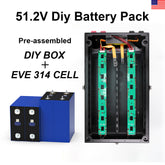

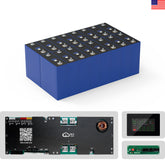

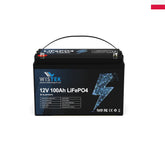
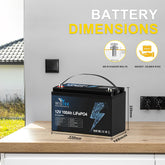

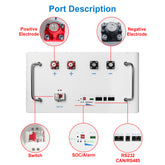
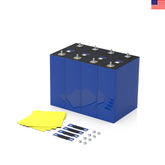
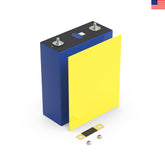
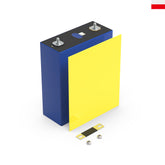

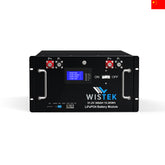
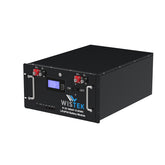
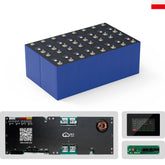








Leave a comment
All blog comments are checked prior to publishing